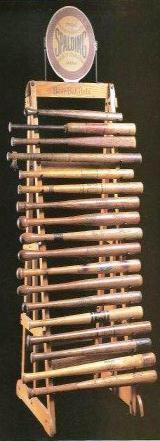How Do Tag Outs/Outs Work?

Force At 2B, SS Attempting To Complete The Double Play

Tag For The Out

Game Situation, Runners At 1B and 3B.

Attempting To Steal A Base
Anonymous asked: I've been watching some MLB games, and I've noticed that some plays include the baseman catching a ball from another fielder, and using his foot to tag the base.
If the baseman's foot touches the base before the runner gets there, is the runner out?
This goes for all 4 bases.
Also, is a runner allowed to steal a base before the pitcher is on the rubber, or before the batter is in the box (this is for all bases, except it would be a little bit risky to steal home)? Thank you!
Rick answered: Thank you for your question.
The plays you are seeing where a fielder catches a ball and steps on a base, before the runner can reach the base are called force outs.
The runner must be in a position where he is forced to run when a hitter puts the ball in play. These force plays can happen at any base, as long as the runners behind the runner being forced, had to run, thus making him leave his base.
If you look at the third photo above, you will see that there is a runner at first base, and one at third base.
Once the batter hits the ball on the ground, the runner on first base is forced to leave 1b. If the ground ball is caught, the fielder has the option to throw the ball to another fielder covering second base. If the throw arrives at 2b and the fielder catching the ball touches 2b, prior to the runner touching it, the runner has been forced out.
Looking at the same photo, there is also a runner on third base. When that ground ball is hit, the runner on third base is not forced to run.
If he decides to run on the play, he does so on his own, there is no runner behind him to force him to leave his base.
Lets say that he decides to run, and the fielder throws the ball to the catcher, not to 2b.
This is a non-force situation, the catcher must "tag" the runner with the ball, either in his glove, or his bare hand. The "tag" must happen before the runner touches home plate.
The force or non force situations are the same at every base.
Runners can attempt to steal a base, any time the ball is "live".
If a batter has not taken his place in the batter's box, quite often the game is in a "dead ball" situation. You will see the umpire gesture to the pitcher that it is now live, as the batter settles in.
In a live ball situation, with the pitcher on the mound, but not on the rubber, or off the mound, the runner is able to attempt to steal at any time.
If the pitcher has not stepped on the rubber, he is considered to be an infielder, and is not under the restrictions surrounding a balk.
A runner going in that situation would almost always get thrown out. Since the runner went on his own, not forced by a batted ball, the out must be recorded by tagging the runner with the ball, before he can tag the base.
Yours in baseball,
Rick










